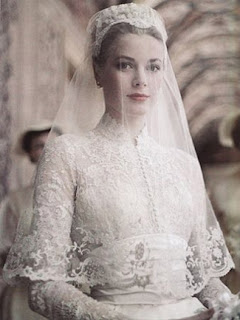 |
| Imperfect wedding = perfect marriage. |
Recently, I discovered that a local television channel plays Sex and the City reruns for approximately six hours every weekday. Not only is this fun because it provides background noise and lunchtime entertainment for a gal who works from home (it’s on right now), but also because it provides a myriad of engagement parties, bridal showers and weddings to watch. Seriously, over the past few days of watching, I’ve realized that people, and not just the main characters, are getting married or attending weddings all the time on that show.
Presuming that all you readers have, at some time or
another, viewed at least a portion of an SATC episode (which I don’t feel
incorrect in doing), it’s likely that you know that “Charlotte” had the perfect
wedding to “Trey”, followed by a perfect divorce from “Trey” and, subsequently,
an extremely non-perfect wedding to “Harry”.
One of my favorite all-time SATC quotes one Carrie
delivered to Charlotte after her second wedding:
“Charlotte,
you already have the perfect wedding, and a not-so-perfect marriage.
Maybe a
not-so-perfect wedding leads to a perfect marriage.”
Carrie, we agree.
All of HJ’s weddings are perfect – we work so hard
that they cannot be anything but just that. However, stuff happens. It’s how a
couple and their wedding planner deal with that “stuff” that matters.
Examples:
|
Problem:
|
Solution:
|
|
Flowers
left too long in too cold of a refrigerator and are delivered semi-dead.
|
Wedding
planner calls and has all new flowers delivered within the hour, bride loves
brand-new arrangements!
|
|
Original
location set aside for favors is no longer available because that day the
district fire marshal identified it as a emergency pathway exit.
|
Wedding
planner moves table to new location where all guests see favors; bride and
groom don’t notice change until they leave reception, and love it!
|
|
Driver
of guest transportation leaves door open and drains vehicle battery, leaving
only one bus for guest transportation.
|
Wedding
planner runs the operating bus on a route and makes it a competition between
which guests can be the most entertaining to the driver – guests love it!
|
|
Photographers
are suddenly required to show insurance documents to the hotel, despite being
told that doing so was not required.
|
Wedding
planner logs on to computer system remotely and retrieves documents, bride
never knows because photographers don’t miss a minute of shooting!
|
See, bad stuff happens. And weddings, although
perfect overall, are certainly not made of everything that is in itself perfect.
From all of this, we here at HJ hope to teach you
that perfection is an overall emotion, and not a minute-by-minute, tiny event-by-tiny
event, by-the-book thing. We encourage you to laugh at the little problems that
arise and to understand that there is very little chance that your guests
recognized that anything was amiss.
We also hope to teach you that the solution to each of
these problems was US, which just might mean that you should give us a call.
More than anything, however, we hope to teach you
that an imperfect wedding absolutely, definitely does not mean an imperfect
marriage. We support Carrie’s statement because, in the case of the couples
above, each is happy and more in-love than ever.
So go on, let yourself spill red wine on your
wedding dress…Charlotte did and lived happily ever after.
But, if you really want to know my truly favorite
quote, it’s: “When they do the Hora, just remember to keep your legs together.
Ah, the HORROR!”
 |
| Yes, this is the exact moment when Charlotte's wedding planner provides the best advice ever. |






